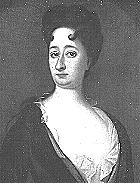 W
WMargareta von Ascheberg was a Swedish land owner, noble and acting regiment colonel during the Great Northern War.
 W
WMah Laqa Bai, born Chanda Bibi, and sometimes referred to as Mah Laqa Chanda, was an Indian 18th century Urdu poet, courtesan and philanthropist based in Hyderabad. In 1824, she became the first female poet to have a diwan of her work, a compilation of Urdu Ghazals named Gulzar-e-Mahlaqa, published posthumously. She lived in a period when Dakhini was making its transition into the highly Persianized Urdu. Her literary contributions provide insight on such linguistic transformations in southern India. She was an influential female courtesan of the Deccan; the Nizam, ruler of Hyderabad, appointed her to the omarah, and as a close affiliate at the court. In 2010, her memorial in Hyderabad, that houses her tomb, was restored using funds donated by the Federal government of the United States.
 W
WManuela Beltrán was a Neogranadine woman who organized a peasant revolt against excess taxation in 1780.
 W
WMai Bhago also known as Mata Bhag Kaur, was a Sikh woman who led Sikh soldiers against the Mughals in 1705. She was an exceptionally skilled warrior on the battlefield and is revered as a saint in Sikhism. She was known for rallying the 40 Sikhs who abandoned Guru Gobind Singh at the siege of Anandpur Sahib and bringing them back to fight.
 W
WMarie-Angélique Josèphe Brûlon, née Duchemin, was a French soldier.
 W
WGeneviève de Brunelle, Marquise de Combray (1742–1823), was a French counter-revolutionary and royalist during the French Revolution and the first empire.
 W
WCéleste Bulkeley (1759–1832) was a French soldier in the Catholic and Royal Army during the war in the Vendée. She was one of at least six women known as the amazons in the army of François de Charette. She is particularly known, being included as a heroine in many school books during the 19th century.
 W
WLovisa von Burghausen was a Swedish memoirist who became famous for her story about her time in captivity as a slave in Russia after being taken prisoner by the Russians during the Great Northern War. She was sold as a slave several times before she eventually recovered her freedom, and her story became perhaps the most famous of the many stories of Carolinian fates of this period.
 W
WJean Cameron of Glendessary was a member of the Scottish gentry and a Jacobite. She may have been briefly involved in the Jacobite rising of 1745, during which the Stuart heir Charles Edward attempted to reclaim the British throne for his father.
 W
WMary Campbell was an American colonial settler, taken captive as a child by Native Americans during the French and Indian War. Later rescued, she is believed to have been the first white child to travel to the Western Reserve.
 W
WChing Shih (born Shih Yang, a.k.a. Cheng I Sao, was a Chinese pirate leader who terrorized the China Seas during the Jiaqing Emperor period of the Qing dynasty in the early 19th century. She commanded over 1800 junks manned by 60,000 to 80,000 pirates – men, women, and even children. She entered into conflict with major nations, such as the British Empire, the Portuguese Empire, and the Qing dynasty.
 W
WAnna Colbjørnsdatter Arneberg (1667–1736) was a Norwegian national heroine who was most known for her participation in the Battle of Norderhov during the Great Northern War.
 W
WThe Mino, or Minon, which means "our mothers", called Dahomey Amazons by European writers, were a Fon all-female military regiment of the Kingdom of Dahomey in the present-day Republic of Benin which lasted until 1904. They were so named by Western observers and historians due to their similarity to the mythical Amazons of ancient Anatolia and the Black Sea.
 W
WAnna Maria Jansdotter Engsten was awarded with a medal in silver for Valour in Battle at Sea by King Gustav III of Sweden for her acts during the Russo-Swedish war of 1788–1790.
 W
WMary Hay, 14th Countess of Erroll was a Scottish noblewoman and suo jure Countess of Erroll. As 18th Hereditary Lord High Constable and Knight Marischal of Scotland, she was the Senior Great Officer among the Royal Officers of Scotland and Chief of the King's Household in Scotland. She inherited these titles in 1717 on the death of her unmarried brother, Charles Hay, 13th Earl of Erroll.
 W
WLady Mackintosh (1723–1784) was a Scottish Jacobite of the Clan Farquharson, a Scottish clan of the Scottish Highlands and also the wife of Angus Mackintosh, chief of the Clan Mackintosh.
 W
WMarie-Thérèse Figueur, known by the nom de guerre Sans-Gêne, was a French heroine who fought in the French Revolutionary Wars and Napoleonic Wars. In contrast with most female soldiers before the twentieth century, she did not disguise her gender when she enlisted, serving for twenty-two years under her own name in the French Revolutionary Army and the Grande Armée.
 W
WElizabeth "Betsy" Gray, is a folkloric figure in the annals of 1798 Rebellion in Ireland. Ballads, poems and popular histories celebrate her presence in the ranks of the United Irishmen, and her death, on 12 June 1798 at the Battle of Ballynahinch. Contemporary records are unable to confirm the tale that has been told in all its detail, but they do point to role of woman in supporting the insurrection, including as combatants in the field. Contesting ownership of her memory, in 1898 local unionists disrupted Irish nationalist centenary commemorations and destroyed her grave marker.
 W
WBrita Christina Hagberg, née Nilsdotter, alias Petter Hagberg,, was a woman who served as a soldier in the Swedish army during the Russo-Swedish War (1788–1790). She is one of two confirmed women to have been decorated for bravery in battle in Sweden before women were allowed into the military in the 20th century.
 W
WKari Rasmusdatter Hiran, was a Norwegian farmer and war heroine. She is known for her act during the invasion of Norway by Charles XII of Sweden during the Great Northern War in 1716. She gave the Swedish army false information about the size and plans of the Norwegian army, which evidently caused the Swedish monarch to interrupt his attempt to conquer Norway and return to Sweden. A memorial stone was raised for her in 1956.
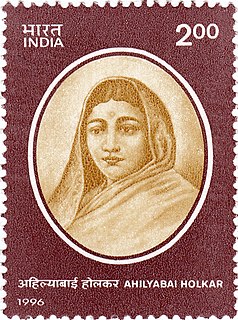 W
WAhilyabai Holkar was the hereditary noble sardar of the Maratha Empire, India. Ahilya was born in the village of Chondi in Jamkhed, Ahmednagar, Maharashtra. She moved the seat of her fiefdom to Maheshwar south of Indore on the Narmada River.
 W
WMary Jemison (Deh-he-wä-nis) was a Scots-Irish colonial frontierswoman in Pennsylvania and New York, who became known as the "White Woman of the Genesee." She had been taken as a youth and adopted into a Seneca family, assimilating to their culture, marrying two Native American men in succession, and having children with them. In 1824 she published a memoir of her life, a form of captivity narrative. In 1755 during the French and Indian War, Jemison at age 12 was captured with most of her family in a Shawnee mourning raid in what is now Adams County, Pennsylvania. The others of her family were killed. She and an unrelated young boy were adopted by Seneca families. She became fully assimilated, marrying a Delaware (Lenape), and, after his death, a Seneca man. She chose to remain a Seneca rather than return to American colonial culture.
 W
WJulianna Géczy (1680-1714) was a Hungarian noblewoman. She became famous for her defense of Lőcse against the Habsburg forces in 1709-10, during the rebellion of Francis II Rákóczi, and known as the "White lady of Lőcse". She was executed in 1714.
 W
WBibi Rajindar Kaur, also known as Rajindan, was a Sikh princess. In 1778, her first cousin Raja Amar Singh of Patiala was defeated by Hari Singh of Sialba. She led 3,000 soldiers to rescue him. She also defended the city of Patiala against Maratha attacks.
 W
WRani Sada Kaur was chief of the Kanhaiya Misl from 1789 to 1821. She was the wife of Gurbaksh Singh Kanhaiya, the heir of Jai Singh Kanheya, the leader of the Kanhaiya Misl and is sometimes referred to as Sardarni Sada Kaur.
 W
WDorothea Maria Lösch, was a Swedish master mariner, known for the incident during the Russo-Swedish War (1788–90) in which she commandeered a Swedish ship during a crisis. She was the first female in Sweden to be given the rank of Kapten in the Swedish Navy. Her name has also been spelled Losch and Läsch.
 W
WFlora MacDonald ; was a member of the Macdonalds of Sleat, who helped Charles Edward Stuart evade government troops after the Battle of Culloden in April 1746. Her family supported the government during the 1745 Rising and Flora later claimed to have assisted Charles out of sympathy for his situation.
 W
WVictoria "Abdaraya Toya" Montou was a Dahomey in the Benin tribe and freedom fighter in the army of Jean-Jacques Dessalines during the Haitian Revolution. She was reportedly Dessalines's aunt. Toya was a slave in Henry Duclos estate. Toya Montou was not the only woman to serve in the Haitian army during the revolution. While most of the names of the female soldiers are forgotten, exceptions are Marie-Jeanne Lamartiniére, who served at the Battle of Crête-à-Pierrot, that took place from 4 March until 24 March 1802, and Sanité Belair.
 W
WRani Velu Nachiyar was a queen of Sivaganga estate from c. 1780–1790. She was the first queen to fight against the British colonial power in India. She is known by Tamils as Veeramangai.
 W
WNonhelema Hokolesqua Born in 1718 into the Chalakatha (Chilliothe) division of the Shawnee nation and spent her early youth in Pennsylvania. Her brother Cornstalk, and her metis mother Katee accompanied her father Okowellos to the Alabama country in 1725. Their family returned to Pennsylvania within five years. In 1734 she married her first husband, a Chalakatha chief. By 1750 Nonhelema was a Shawnee chieftess during the 18th century and the sister of Cornstalk, with whom she migrated to Ohio and founded neighboring villages.
 W
WOnake Obavva was a brave woman who fought the forces of Hyder Ali single-handedly with a pestle (Onake) in the kingdom of Chitradurga of Karnataka, India. Her husband was a guard of a watchtower in the rocky fort of Chitradurga. In the state of Karnataka, she is celebrated along with Abbakka Rani, Keladi Chennamma and Kittur Chennamma, as the foremost women warriors and patriots. She belonged to the Holayas (Chalavadi) community.
 W
WBrita Olsdotter was an old Swedish woman who, according to legend, saved the city of Linköping from being burnt by the Russians during the Great Northern War.
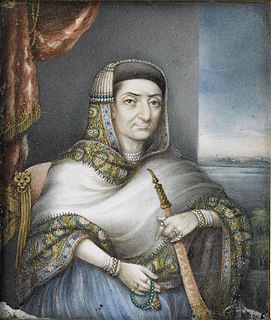 W
WJoanna Nobilis Sombre, a convert Catholic Christian, popularly known as Begum Samru and also, as Begum Sumru, started her career as a Nautch (dancing) girl in 18th century India, and eventually became the ruler of Sardhana, a small principality near Meerut. She was the head of a professionally trained mercenary army, inherited from her European mercenary husband, Walter Reinhardt Sombre. This mercenary army consisted of Europeans and Indians. She is also regarded as the only Catholic ruler in India, as she ruled the Principality of Sardhana in 18th- and 19th-century India.
 W
WFranziska Scanagatta was an Italian woman who disguised herself as a man in order to attend an Austrian officer school in 1794. She served during the French Revolution and was promoted to Leutnant (lieutenant) in 1800. In 1801 she left the army and was granted a pension by Kaiser Franz II, when he learned of her story.
 W
WMarie Schellinck, also known as Shelling, was a Belgian soldier who fought in the French Revolution.
 W
WBrigitta Christina Scherzenfeldt, as married Bernow, Lindström, Ziems, and Renat, was a Swedish memoirist and weaving teacher who was captured during the Great Northern War and lived as a slave over 15 years in the Dzungar Khanate in Central Asia. She dictated her memoirs, describing her life as a slave, after her release. Her story is regarded as a unique source of information about life among the Dzungars.
 W
WYelena Ivanovna Shidyanskaya, was a Greek-Russian military commander. She was an ethnic Greek Crimean appointed commander of the "Amazon company" appointed by Grigory Potemkin to serve during the visit of Catherine the Great to the Crimea in 1787. While this military unit was largely ceremonial and existed only during Catherine's visit, it was nevertheless formally a military unit during its existence, and Yelena Shidyanskaya was thereby the first woman in Russia to be appointed to the post of commander of a military unit.
 W
WMaría Josefa Gabriela Cariño de Silang was a Filipina revolutionary leader best known as the first female leader of an Ilocano movement for independence from Spain. She took over the reins of her husband Diego Silang's revolutionary movement after his assassination in 1763, leading the Ilocano rebel movement for four months before she was captured and executed by the colonial government of the Spanish East Indies.
 W
WBartolina Sisa Vargas was an Aymaran woman and indigenous heroine who led numerous revolts against the Spanish rule in Charcas, then part of the Viceroyalty of Peru and present-day Bolivia. Alongside her husband, the indigenous leader Túpac Katari, she participated in the organisation of indigenous military camps that took part in the siege of La Paz. She was betrayed and turned in to the Spanish authorities, who later executed her.
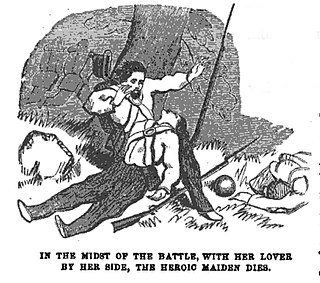 W
WSally St. Clair was an American woman from South Carolina who disguised herself as a man and joined the Continental Army. Her true gender was not discovered until after she was killed in battle during the Siege of Savannah in 1782.
 W
WMary Anne Talbot also known as John Taylor was an Englishwoman who wore male dress and became a soldier and sailor during the French Revolutionary Wars.
 W
WTarabai Bhonsale was the regent of the Maratha Empire of India from 1700 until 1708. She was the queen of Chhatrapati Rajaram Bhonsale, daughter-in-law of the empire's founder Shivaji and mother of Shivaji II. She is acclaimed for her role in keeping alive the resistance against Mughal occupation of Maratha territories after the death of her spouse, and acted as regent during the minority of her son. Her efforts for preservation of indigenous culture is widely lauded.
 W
WThao Thep Krasattri (ท้าวเทพกระษัตรี) and Thao Si Sunthon (ท้าวศรีสุนทร) were styles awarded to Than Phu Ying Chan (ท่านผู้หญิงจัน), wife of the then recently deceased governor of Mueang Thalang, Phuket Province, and her sister, Khun Muk (คุณมุก), who defended the island in the Burmese–Siamese War (1785–1786). According to popular belief, they repelled a five-week invasion by Burmese in 1785, killing male soldiers and rallying Siamese troops. They were also referred to as Chan and Mook.
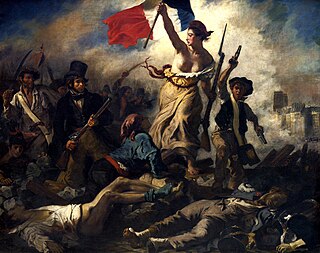 W
WHistorians since the late 20th century have debated how women not shared in the French Revolution and what short-term impact it had on French women. Women had no political rights in pre-Revolutionary France; they were considered "passive" citizens, forced to rely on men to determine what was best for them. That changed dramatically in theory as there seemingly were great advances in feminism. Feminism emerged in Paris as part of a broad demand for social and political reform. The women demanded equality to men and then moved on to a demand for the end of male domination. Their chief vehicle for agitation were pamphlets and women's clubs, especially the Society of Revolutionary Republican Women. However, the Jacobin element in power abolished all the women's clubs in October 1793 and arrested their leaders. The movement was crushed. Devance explains the decision in terms of the emphasis on masculinity in wartime, Marie Antoinette's bad reputation for feminine interference in state affairs, and traditional male supremacy. A decade later the Napoleonic Code confirmed and perpetuated women's second-class status.